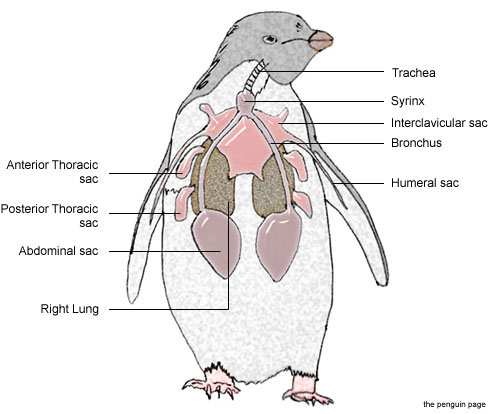
When the penguin exhales, air situated in the posterior air sacs flows into the lungs via the ventrobronchi and dorsobronchi. As air flows through these two bronchi, they travel out into smaller bronchi called parabronchi. You've read about this in the histology section, so you know this is where oxygen exchanges with the air and the blood. Unlike human lungs, the air doesn't stop here; it keeps flowing onward.
When the penguin inhales for the second time, all the above starts over again. However, the air still in the lungs is pushed further along the respiratory system. Air in the lungs, parabronchi, ventrobronchi, and dorsobronchi is delivered to the anterior air sacs. At this point the penguin exhales one more time. The muscles of the abdomen contract and air is pushed throughout the system once more. Air sitting in the anterior air sacs is throttled into the interclavicular air sac, which is continuous with the trachea. Air flows out the trachea. The cycle of respiration is complete and it begins again.